Info
E-learning modules on Open Data
With the following e-learning modules, you can discover what Open Data is and how Open Data can change the lives of everyone on our planet. These e-learning programs were developed by the European Data Portal (license CC-BY-SA) and can now also be accessed via data.gv.at.
Module overview
- About the e-learning modules
- Module 1 – What is open data
- Module 2 – Value creation through Open Data
- Module 3 – Open Data as a Change Agent
- Module 4 – Why do we need licenses?
- Module 5 – What characterizes qualitative Open Data?
- Module 6 – Measuring the success of Open Data initiatives
- Module 7 – Why should we care about sustainability?
- Module 8 – Coping with platforms
- Module 9 – How to choose the right format for Open Data
- Module 10 – How useful is my data?
- Module 11 – How to clean your data
- Module 12 – Find hidden data on the web
- Module 13 – Linking the ‘Web of Data
- Module 14 – Promote Open Data
- Module 15 – Change Management in Open Data
- Module 16 – Achieving positive effects with Open Data
About the e-learning modules
What is e-learning?
A total of 16 short modules were selected, designed for everyone to learn more about Open Data. The modules are suitable for all learning levels, from beginner to expert.
How long does the course last?
We know that most people are too busy to complete an entire course at once. That’s why our modules were designed to fit even into a full calendar. For those who just want to get an overview, each module only takes between 15 and 30 minutes. For those who wish to study this area in more depth, each module contains up to 2 hours of extra reading.
When to use these modules?
To achieve the best result, all 16 modules must be completed in sequence. This provides a solid foundation for all aspects of Open Data. However, if you want to select a specific topic, you can also edit the corresponding module directly.
What can you learn?
The e-learning program provides an introduction to all aspects of open data. One learns about the definitions related to the concept and can read success stories from all over Europe. We present the main trends in Open Data and explain how to publish, access and use it. Finally, we look at the future of Open Data and challenge the training participant to think about the next steps for their own work.
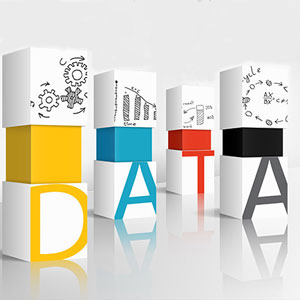 Module 1 – What is open data
Module 1 – What is open data
Open data is data that may be used, redistributed and reused by anyone without restriction. Governments, businesses and individuals can use Open Data to create social, economic and environmental value.
In this module we will look at the following aspects:
- What is open data?
- What are data
- What makes data open?
- Why do we need open data?
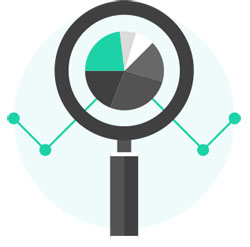 Module 2 – Value creation through Open Data
Module 2 – Value creation through Open Data
Open data has the potential to boost a country’s economy, transform societies, and protect the environment.
In this module, we will learn how governments, businesses, and citizens can use open data to create value.
In this module we explore:
- Enabling innovation and growth for business
- Creating new opportunities for governments
- Bring about social and political change.
- Creating new opportunities for the cultural and environmental sectors
 Module 3 – Open Data as a Change Agent
Module 3 – Open Data as a Change Agent
The most successful Open Data initiatives share similar characteristics. Better understanding successful Open Data approaches can help those who want to leverage the value of Open Data for themselves.
In this module we will explore the following aspects:
- Open Data as a Change Agent
- Leadership and commitment
- Supply and demand
- Culture change for new markets
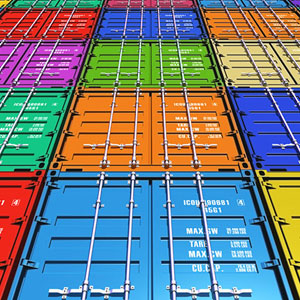 Module 4 – Why do we need licenses?
Module 4 – Why do we need licenses?
For data to be classified as “open” it should be accessible (this usually means published online) have a license that allows anyone to open, use, and share the data.
In this module we will look at the following aspects:
- Why open data must be published with a license?
- How do licenses help unlock the value of Open Data?
- What type of license is suitable for Open Data?
- How can Open Data licensing be ensured in the tender, procurement and contract lifecycle?
 Module 5 – What characterizes qualitative Open Data?
Module 5 – What characterizes qualitative Open Data?
The usability of Open Data cannot be assessed quickly and easily.
There are a number of community-based standards and quality attributes that can help you assess the level of use of Open Data.
In this module we will explore the following aspects:
- What makes data useful?
- How do standards help increase the usability of Open Data?
- Quality features
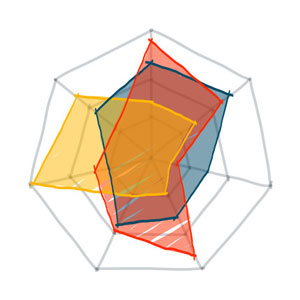 Module 6 – Measuring the success of Open Data initiatives
Module 6 – Measuring the success of Open Data initiatives
Successful Open Data initiatives do more than just publish data on the Internet. Most data-savvy organizations also employ frameworks and policies to support and incentivize innovation. Open Data communities need to be built and success stories communicated. Together, they will help more people understand the benefits of Open Data.
In this module we will explore the following aspects:
- Measure success
- Be demand oriented
- Stay on course
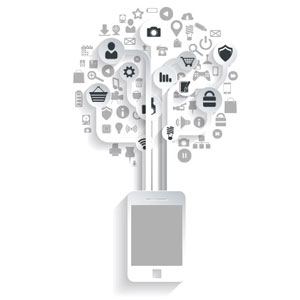 Module 7 – Why should we care about sustainability?
Module 7 – Why should we care about sustainability?
Open Data must be relevant, timely, and accessible to be useful.
A sustainable program is one that continues to regularly publish data of at least the same or improved quality and quantity.
In this module, we will take a closer look at the following aspects:
- How to better understand sustainability
- Why is sustainability important to you
- What you should pay attention to
 Module 8 – Coping with platforms
Module 8 – Coping with platforms
A platform is an important infrastructure on which software applications can run and content can be stored and displayed. The largest platform for Open Data is the Web. However, many other purpose-built software programs can help you publish Open Data or provide interactive tools to help you take a closer look at that data.
In this module we will explore the following aspects:
- How to recognize Open Data platforms
- Understand why platforms are important to users
- What are the types of platforms
- How to use platforms to explore data
 Module 9 – How to choose the right format for Open Data
Module 9 – How to choose the right format for Open Data
The format of an open data set refers to the way the data is structured and made available to humans and machines.
Choosing the right format ensures that data can be easily managed and reused. In order to maximize the reusability of data and meet the needs of users, it may be necessary for a data publisher to use the formats and structures that are considered the most widely used.
In this module we will explore the following aspects:
- Why are data formats important
- How to choose the right data structure for Open Data
- How to choose the right format for Open Data
- Why to work with CSV format
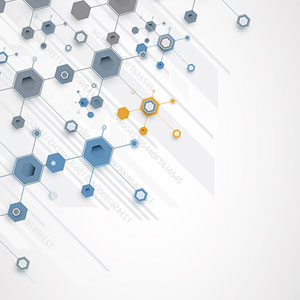 Module 10 – How useful is my data?
Module 10 – How useful is my data?
The usefulness and reusability of open data published by an organization can vary by domain and content. To help with this process, there are a number of best practice guides that can help data publishers and users at the same time.
In this module, we will look at the 5-Star Model for Open Data and learn how to use it to measure the technical usability of data.
In this module we will explore the following aspects:
- What are the 5 stars of the Open Data model?
- What are the first three levels of the 5-star model?
- How do you measure the quality of data according to the 5-Star Open Data Model?
 Module 11 – How to clean your data
Module 11 – How to clean your data
One of the biggest challenges in working with data is dealing with errors. Often, errors are not even noticed by data publishers because the data has changed over many years. In other cases, these errors may be the result of human error during data entry, such as typos or incorrect abbreviations.
When working with data, it is important to know how to find and correct errors to make the data more useful to potential users.
In this module we will explore the following aspects:
- Common mistakes
- Useful tools for data cleansing
- Why data cleansing is important
 Module 12 – Find hidden data on the web
Module 12 – Find hidden data on the web
Open Data does not only stand for data sets that are made available online for download. In fact, downloadable open data represents only a small portion of the data available on the Web.
Most of the data available on the Internet is hidden from the human eye. However, meshes can find and read such data.
In this module we will explore the following aspects:
- How to find hidden data on the Internet
- What advantages can offer hidden data
- How to download hidden data
 Module 13 – Linking the ‘Web of Data
Module 13 – Linking the ‘Web of Data
The Internet is configured as a series of pages or ‘documents’. These documents are based on rich data sources, which are obfuscated under pages intended for people to view. In this module, we examine what would happen if all pages or documents were removed from the web.
Imagine having only the raw data, all open, usable and connected to each other in a network or ‘web of data’.
This module also introduces the web of open, linked data and explores how the 5-Star Open Data model provide a roadmap for achieving this vision.
In this module, we will take a closer look at the following:
- What is the ‘Web of Data’?
- How are Web IDs used?
- What does a ‘Web of Linked Open Data’ look like?
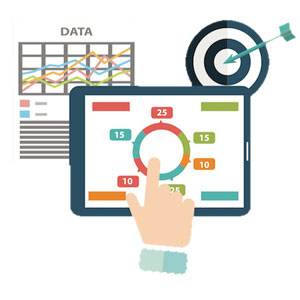 Module 14 – Promote Open Data
Module 14 – Promote Open Data
Opening up data can be valuable to any organization, whether it’s driving innovation in operations, getting a clearer picture of processes, or improving the organization’s products and services. A growing number of organizations, both in the private and public sectors, are benefiting from the publication and reuse of their data.
However, opening up data may require a change in corporate culture. Most organizations are configured to protect their data assets, even though the benefits of data disclosure far outweigh the associated costs. The key to overcoming this resistance is obvious: the benefits that open data can bring should be clearly communicated!
In this module, you will learn how to craft a targeted Open Data ‘pitch’ that explains the added value and risks of publishing open data.
In this module, we will take a closer look at the following aspects:
- Putting together the perfect ‘pitch
- Identify the different target groups for the ‘pitch’.
- Adapt the ‘pitch’ to the target group
 Module 15 – Change Management in Open Data
Module 15 – Change Management in Open Data
Change management is the process of introducing a long-term transition, change, or transformation into an organization. Change management is particularly important for major transformation processes, such as cultural changes to the organization, that are required to be successful in Open Data.
In this module, we will explore why it is important for organizations to manage change and its key elements to set up a successful change management process.
- What is change management?
- Why is change management important in the context of Open Data initiatives?
- Why is change management needed?
- What are the key elements of the change management process?
 Module 16 – Achieving positive effects with Open Data
Module 16 – Achieving positive effects with Open Data
The goal of any Open Data project or initiative is to generate added value, be it on the political, social or economic level. Finding and promoting Open Data applications that have helped improve our daily lives is one of the most difficult aspects of managing an Open Data project, program or initiative.
In this module we will explore the following aspects:
- Why is it important to add value?
- How can we add value through Open Data?
- How can we measure the impact of Open Data?
- How can we overcome obstacles to achieve positive effects with Open Data?
We hope you enjoyed the e-learning modules. At the European Data Portal you will find further training material, reports and material for training facilitators.
Teilen
2 Klicks für mehr Datenschutz: ein wesentliches Open Data-Prinzip besagt, dass keine Daten veröffentlicht werden dürfen, die einen Rückschluß auf einzelne natürliche Personen zulassen. Ein ähnliches Prinzip zum Schutz persönlicher Daten wird auf data.gv.at bei Teilen-Buttons für Social-Media-Netzwerke verfolgt: da diese Teilen-Buttons allein beim Laden bereits Daten übermitteln, bieten wir Ihnen die Möglichkeit der Selbstbestimmung - Sie können selbst entscheiden, ob ein Teilen-Button aktiviert werden soll oder nicht.






